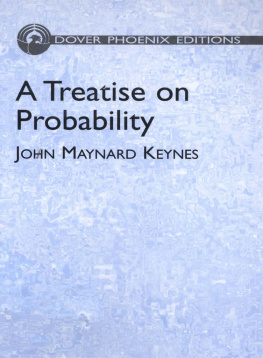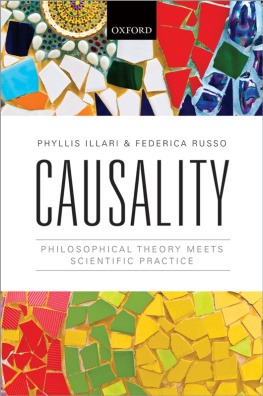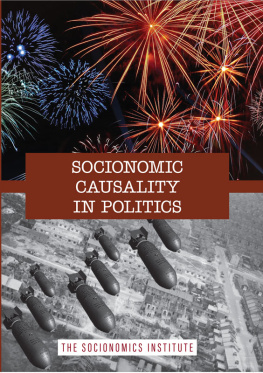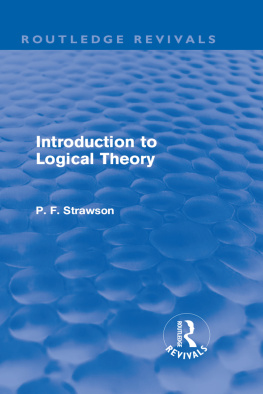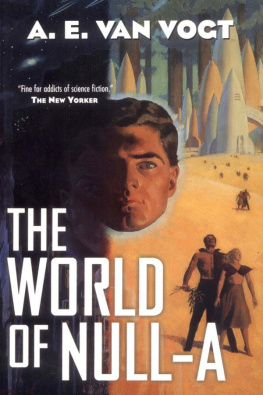Alexander Bochman - A Logical Theory of Causality
Here you can read online Alexander Bochman - A Logical Theory of Causality full text of the book (entire story) in english for free. Download pdf and epub, get meaning, cover and reviews about this ebook. year: 2021, publisher: MIT Press, genre: Romance novel. Description of the work, (preface) as well as reviews are available. Best literature library LitArk.com created for fans of good reading and offers a wide selection of genres:
Romance novel
Science fiction
Adventure
Detective
Science
History
Home and family
Prose
Art
Politics
Computer
Non-fiction
Religion
Business
Children
Humor
Choose a favorite category and find really read worthwhile books. Enjoy immersion in the world of imagination, feel the emotions of the characters or learn something new for yourself, make an fascinating discovery.

- Book:A Logical Theory of Causality
- Author:
- Publisher:MIT Press
- Genre:
- Year:2021
- Rating:4 / 5
- Favourites:Add to favourites
- Your mark:
- 80
- 1
- 2
- 3
- 4
- 5
A Logical Theory of Causality: summary, description and annotation
We offer to read an annotation, description, summary or preface (depends on what the author of the book "A Logical Theory of Causality" wrote himself). If you haven't found the necessary information about the book — write in the comments, we will try to find it.
A Logical Theory of Causality — read online for free the complete book (whole text) full work
Below is the text of the book, divided by pages. System saving the place of the last page read, allows you to conveniently read the book "A Logical Theory of Causality" online for free, without having to search again every time where you left off. Put a bookmark, and you can go to the page where you finished reading at any time.
Font size:
Interval:
Bookmark:
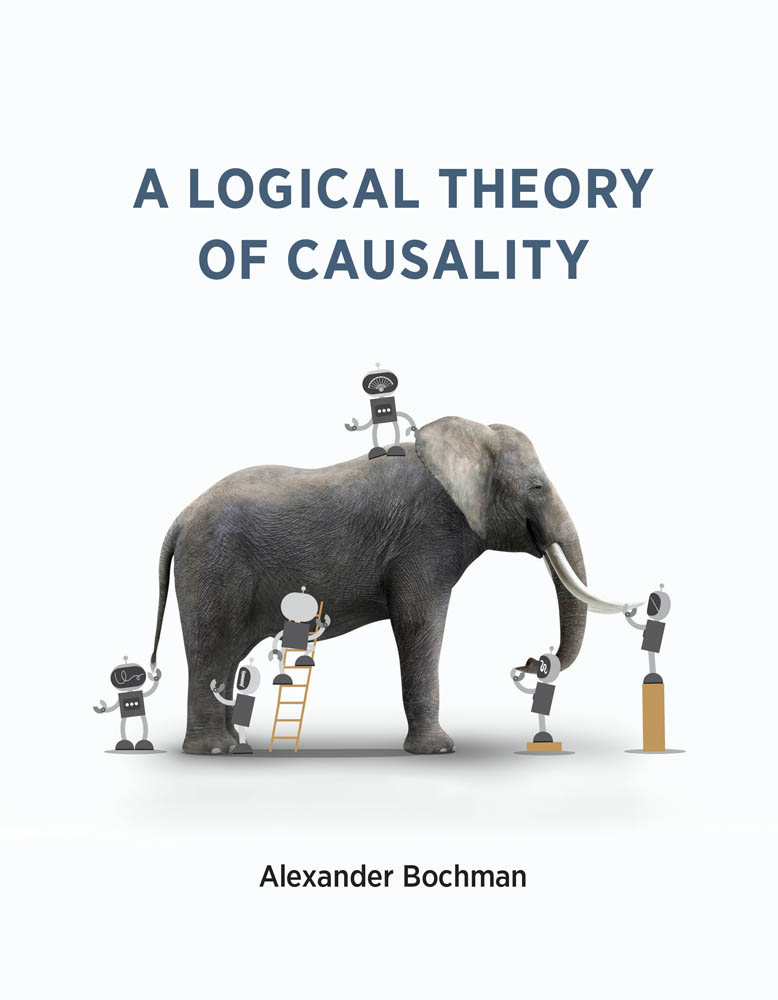
A Logical Theory of Causality
Alexander Bochman
The MIT Press
Cambridge, Massachusetts
London, England
2021 Massachusetts Institute of Technology
All rights reserved. No part of this book may be reproduced in any form by any electronic or mechanical means (including photocopying, recording, or information storage and retrieval) without permission in writing from the publisher.
The MIT Press would like to thank the anonymous peer reviewers who provided comments on drafts of this book. The generous work of academic experts is essential for establishing the authority and quality of our publications. We acknowledge with gratitude the contributions of these otherwise uncredited readers.
Library of Congress Cataloging-in-Publication Data
Names: Bochman, Alexander, 1955 author.
Title: A logical theory of causality / Alexander Bochman.
Description: Cambridge, Massachusetts: The MIT Press, 2021. | Includes bibliographical references and index.
Identifiers: LCCN 2020037281 | ISBN 9780262045322 (paperback)
Subjects: LCSH: Nonmonotonic reasoning. | Causation. | Logistics.
Classification: LCC Q339.2.B628 2021 | DDC 122dc23
LC record available at https://lccn.loc.gov/2020037281
d_r0
The subject of causation is not a virgin land. Rather, today it is more like a jungle that has grown on a rich soil after centuries of philosophical wars, occupation, and even exile. A significant part of our task in this book will involve archaeological excavations and restorations using modern logical tools.
Still, this is not a philosophical or historical book. Our main objective will be to build a formal theory of causal reasoning on this territory and explore its applications in areas ranging from artificial intelligence to legal theory and dynamic reasoning. In this respect, our study will follow a broadly axiomatic, Euclidean approach to causation. We will leave outside the scope of the book whether our theory is compatible with the wealth of other philosophical views of causation, though we will make an effort to bring historical evidence that support, or agree with, our approach.
Causation is a fundamental concept of our reasoning, but even general studies of this notion have always been highly susceptible of falling into the parable of the blind men and the elephant; too often they have chosen only one, however important, aspect of the notion as a key to the whole concept. In this respect, our aim in this book has also consisted in showing how many diverse and even undiscovered parts this elephant has as well as a broad range of topics that ought to be pursued in its study, such as laws, counterfactuals, actual and indeterminate causation, abduction, structural equations and logic programs, and even general dynamic reasoning.
In recent years, we have been witnessing a revival of interest in the concept of causation, accompanied by new, more formal, but also more practical insights about its role in our reasoning. Most prominent in this respect is undoubtedly Pearls theory of causal reasoning in the mathematical framework of structural equations and its applications in statistics, economics, and cognitive and social sciences (see Pearl ).
A more logic-oriented approach to causality has also emerged in artificial intelligence (AI). Basically, it considers causal reasoning as a particular kind of nonmonotonic reasoning, a kind especially suitable for explanation, diagnosis, abduction, and reasoning about actions and change. By its very nature, it brings the promise of an explainable AI.
This book could be naturally affiliated to this latter approach, though we see its scope as a general theory of causal reasoning that is not restricted to problems of AI alone. A large portion of examples and notions that will be studied in what follows will be driven by problems of causal reasoning in the legal theory, general dynamic formalisms, and even linguistic semantics.
The theory that will be developed in this book will also aim to transform causality from a concept shrouded in mystery into a formal object with well-defined semantics and well-founded logic (see the preface to). However, in contrast to the mathematization of causality that has been successfully implemented by Pearl, the present book suggests a truly logical theory of causality as a study of causal models, reasoning, and inference, just as it was envisaged in the title of Pearls book.
A Road Map
To a large extent, each of the four parts of this book, and even most of the chapters, could be read independently of one another. To facilitate such readings for those who are only interested in particular areas or problems of causal reasoning, we will provide below the main shortcut paths through the book.
To begin with, the main purpose of the unusually large prolegomena to the book (part I) consists in reshaping the standard picture of reasoning that has been solidified in the past century, a picture that has been dominated by deductive logic and its possible world semantics. In particular, these prolegomena lay down two logical prerequisites, or foundations, on which we build our theory of causal reasoning. The first is a local, situation-based semantics for (classical) logic that provides the required logical space for our causal formalism; it is described in chapter 2. It also establishes a subtle boundary between what can be viewed as a purely logical reasoning and what falls beyond it. The second prerequisite of our formalism is a general theory of nonmonotonic reasoning that is described in chapter 3. As we show in due course, our main formalism for causal reasoning turns out to be a special instance of this general theory. Still, chapters 2 and 3 are not formally required for reading subsequent chapters of the book, so they could be skipped (at least on a first reading) by readers who are ready to take the existence of such foundations for granted.
The main formalism of this book, the causal calculus, is described in chapter 4. This chapter also provides a formal background for subsequent chapters in parts II and III. Still, there are no further dependencies among most of these chapters, except for chapters 8 and 9, which form, in effect, two successive stages of a single theory of actual (or token) causality. However, for readers that are especially (or exclusively) interested in this latter notion, most of the content of these two chapters revolves around well-known examples from the literature, and we could even recommend here a reverse reading order that starts with the examples and proceeds to the formal justifications we give for our solutions. Actually, this way of acquiring knowledge could be viewed as a truly Aristotelian scientific method (see section 1.1 in chapter 1).
Finally, part IV of the book presents a generalization of causal reasoning to dynamic domains. It is described, however, as a self-contained theory that does not require any previous knowledge of causal reasoning, though it presupposes some knowledge of propositional dynamic logic (PDL) and related logical formalisms. But the last chapter, chapter 12, presupposes again some knowledge of the causal calculus from chapter 4.
A Detailed Plan
A more detailed plan of our study is as follows.
In chapter 1, we discuss the general structure of our approach and the very possibility of a logical analysis of causation. We will argue that causal reasoning is not a competitor of logical reasoning but its complement for situations where we do not have logically sufficient data. We suggest a two-tier construction of such a reasoning in which the causal component is built on top of an underlying logical formalism. We will show that this two-layer scheme of causal reasoning can be found already in Aristotles
Font size:
Interval:
Bookmark:
Similar books «A Logical Theory of Causality»
Look at similar books to A Logical Theory of Causality. We have selected literature similar in name and meaning in the hope of providing readers with more options to find new, interesting, not yet read works.
Discussion, reviews of the book A Logical Theory of Causality and just readers' own opinions. Leave your comments, write what you think about the work, its meaning or the main characters. Specify what exactly you liked and what you didn't like, and why you think so.




